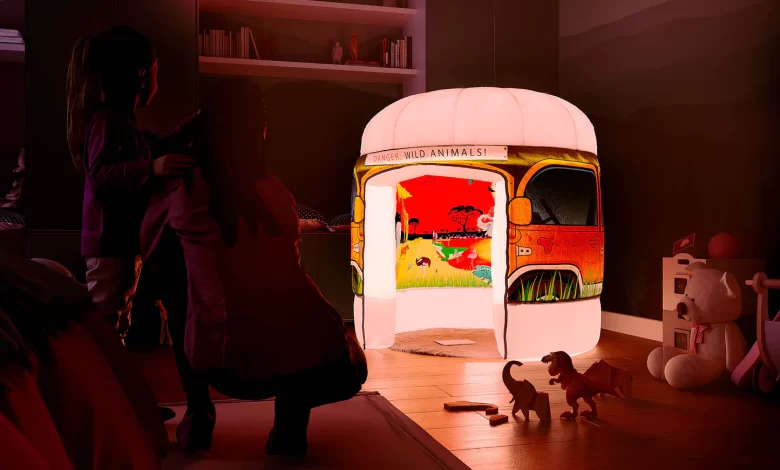Calming Sensory Bedrooms Ideas for Autism

People with autism spectrum disorder (ASD) experience challenges with social and communication skills and significant challenges with sensory processing. These challenges can make life very difficult for people with ASD, leading to various issues including sleep difficulties. One way to help individuals with ASD get a good night’s sleep is to create calming sensory bedrooms for autism. This type of bedroom is designed to provide individuals with ASD with a calming and soothing environment. In this blog, we’ll discuss some ideas for calming sensory bedrooms below!
Types of Sensory Rooms
If you are looking to create a calming sensory room for an autistic child or adult, here are some ideas to get you started. Some of the most common needs of people with autism include sensory input that is calm and repetitive. Some common calming sensory rooms include:
1) A relaxing room with soft music and low light. This can be set up in the home or clinic, and can help children with autism focus and relax.
2) A space filled with crunchy textures and noises. This can be used as a play area, or may be set up in a room specifically for autistic children. Alternately, the textures and sounds can be used to calm adults during treatments or appointments.
3) A brightly colored and patterned room with limited noise. This can help adults with autism focus on tasks, or can be used as a bedroom to help autistic children sleep better at night.
4) A space filled with fluffy toys and other soft objects. This helps adults feel safe and secure, while also providing therapeutic relief for autistic children who crave touch.
Finally, make sure to provide plenty of comfortable seating and materials for people to relax and focus. This can include pillows, blankets, and soft toys. By following these tips, you can help create a sensory room that is more welcoming and calming for those with autism.
The Purpose of a Sensory Room
There is a lot to be said for having a sensory room. For one, it can provide a much-needed refuge for children with autism and other special needs who may find their environment overwhelming or stimulating. It can also help to calm anxious or fidgety individuals.
The key to creating a sensory room that is both calming and therapeutically effective is to make sure the environment is properly tailored to the needs of the individual. Some of the key features that may be important include:
– Soft textures, light colors, and calming sounds: All of which can help to reduce stress levels.
– Plenty of outlets and places to hide: This will allow individuals with autism or other special needs to escape from difficult situations or stimuli.
– Sensory activities that are both fun and educational: These can help promote relaxation and foster positive sensory experiences.
How to Decorate a Sensory Room
There are a few things you can do to decorate a sensory room to make it more calming and tolerable for those with autism.
One way to decorate a sensory room is to use calming colors. You could go with light blues, greens, grays, and even pale pinks or soft purples. Avoid bright colors or patterns, as they may be overwhelming to someone with autism.
Some people also like to put up pictures of nature or animals that are calm and soothing. This can help create a sense of peace and calm in the room.
You could also add some soft music or sounds to your sensory room. This can help distract a person with autism from their surroundings and help them get some relief from their symptoms.
By following these tips, you can help create a sensory room that is more welcoming and calming for those with autism.
Tips for Creating a Calming and Safe Environment for Your Autistic Child
One of the best ways to help your autistic child feel safe and calm is to create a sensory-friendly environment in their bedroom. Here are some tips for doing just that:
1. Keep the room clutter-free. Autistic children often have a hard time focusing on anything other than their own world, so keeping the room clean and clutter-free will help them feel more relaxed.
2. Install calming sounds and lights. Some parents find it helpful to install calming sounds and lights in their autistic child’s bedroom. Try listening to relaxing music or watching calming lights at night to help your child drift off to sleep.
3. Create a comfortable space for your child to sleep in. Make sure the bed is big enough for them to lie down comfortably, and make sure there are no sharp edges or surfaces nearby that could cause them pain when they’re sleeping.
4. Let your child choose his own bedtime routine. Since autistics tend to be very rigid with their routines, let your child choose his own bedtime routine by providing options such as reading books before bed, playing games on tablets or smartphones before going to sleep, or taking a bath before bedtime. This way, they can create a schedule that works best for them and helps him wind down for the night
Conclusion
However, there are ways to create calming sensory rooms for schools that can help autistic individuals live more comfortably and productively in their environment. By implementing certain strategies into your bedroom design, you can provide your autistic loved one with a space that is conducive to their needs and help them feel more at ease in both private and public settings.




